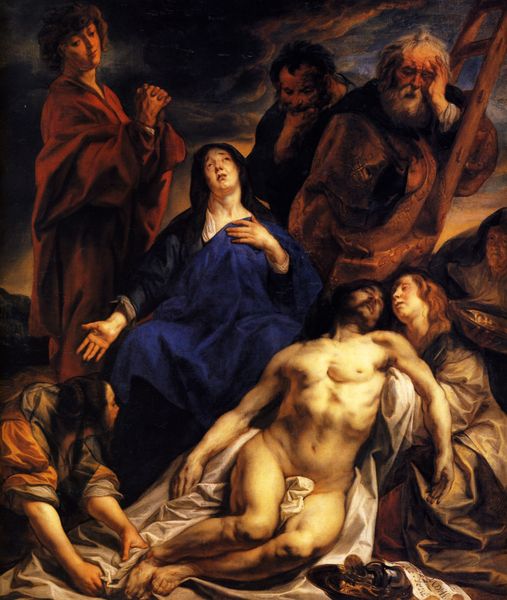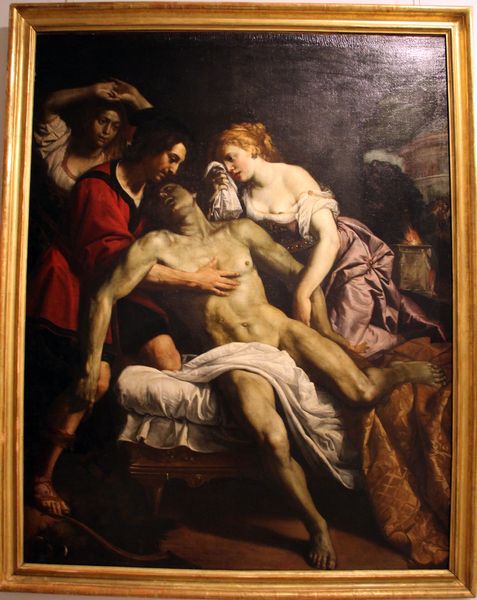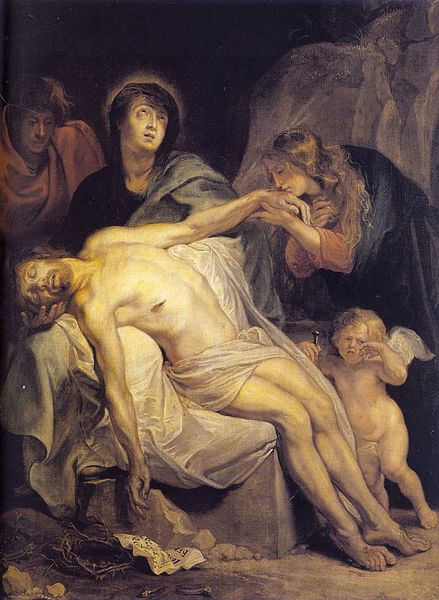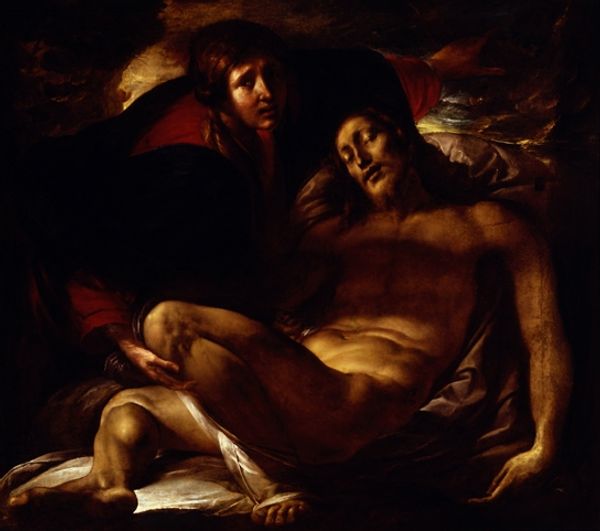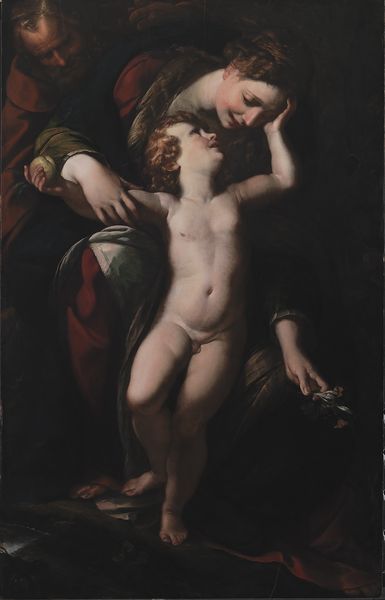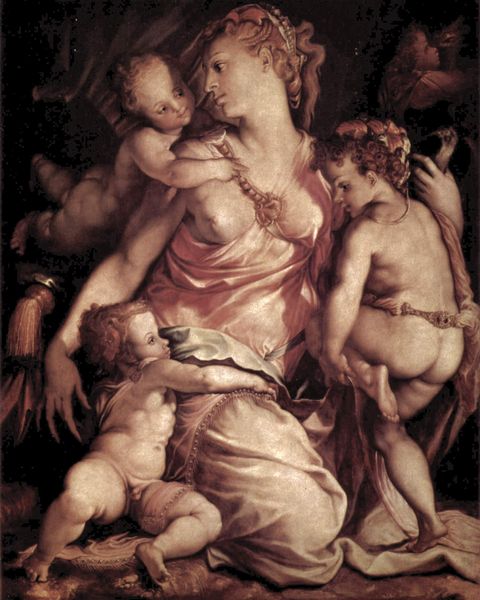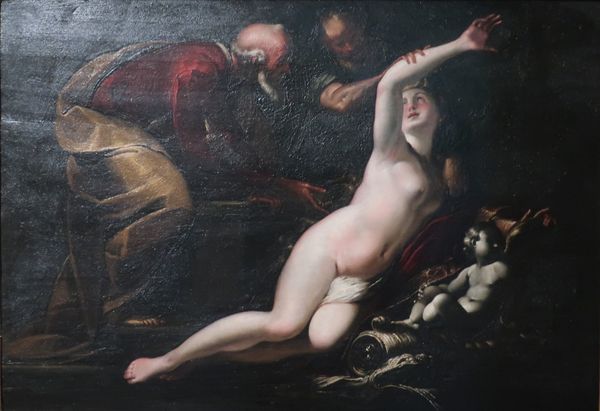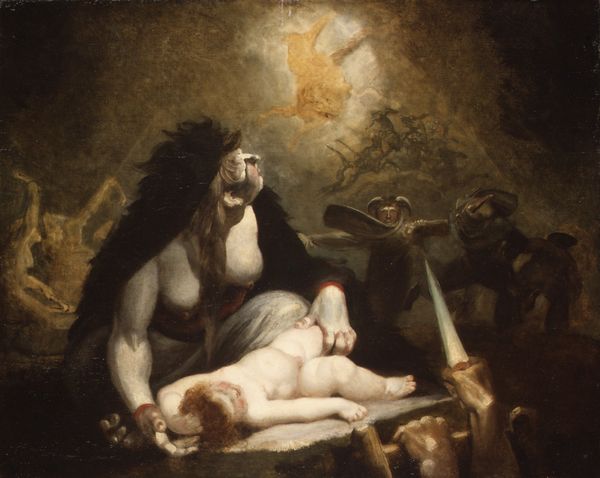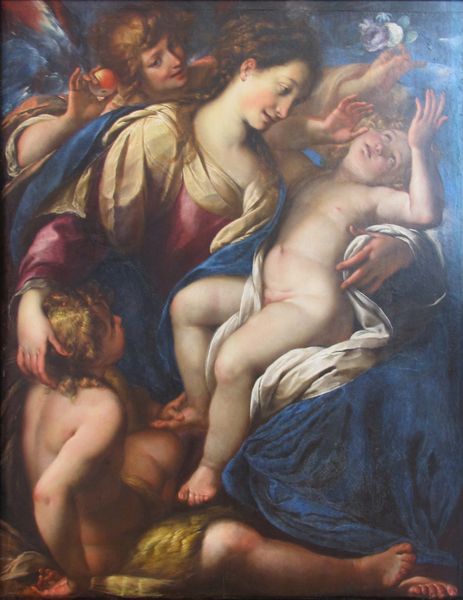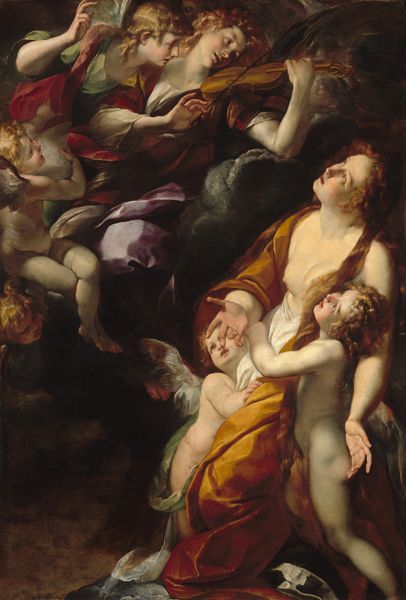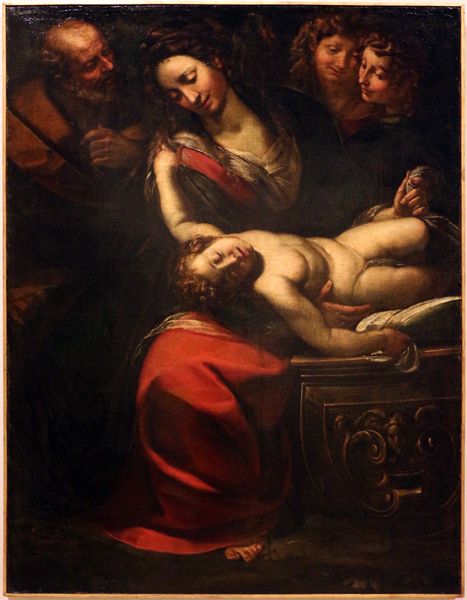
painting, oil-paint
#
high-renaissance
#
painting
#
oil-paint
#
landscape
#
figuration
#
oil painting
#
christianity
#
italian-renaissance
#
christ
Copyright: Public domain
Editor: Here we have Lorenzo Lotto's "Pieta," painted around 1545. It's an oil painting, and the sheer weight of grief feels almost palpable. What draws your eye when you look at this, particularly concerning the materials or its making? Curator: Well, let's consider Lotto's process. Look at the visible brushstrokes. This wasn’t about achieving a flawless, idealized form, but about the direct application of pigment. The texture itself communicates something raw and immediate, almost mirroring the rawness of the emotional content. The pigments available at the time also deeply influenced the mood – what can you say about how Lotto's social context comes into play here? Editor: That's a great point. I guess access to certain pigments, and the cost of those materials, would shape who could even create a piece like this. The limited palette adds to the somber feeling for sure. Curator: Exactly! Beyond the cost, consider the *labor* involved. Grinding pigments, preparing the canvas – all intensive physical acts. That work infuses the painting, giving it a concrete connection to human effort, doesn’t it? And it distances itself from something like a perfect form of artistry like sculpture. The use of oil also allowed for greater blending and layering. Notice how this manipulates the texture of skin. It gives off the illusion of human form. What does the body mean in the context of this art? Editor: It feels very human, very present... even in death. More emphasis is placed on human feelings, instead of trying to idealize what’s going on. Curator: And that shift, focusing on human experiences and the *physical* process of creation, really challenges those old Renaissance notions about what “high art” should be. Seeing the process emphasizes a human-centered form of grief. Editor: I'm starting to see how the very materials and methods he used speak to a larger cultural conversation about art, labor, and belief. Curator: Precisely! It’s about understanding art not just as a finished product, but as a record of its making, and its maker’s world.
Comments
No comments
Be the first to comment and join the conversation on the ultimate creative platform.

